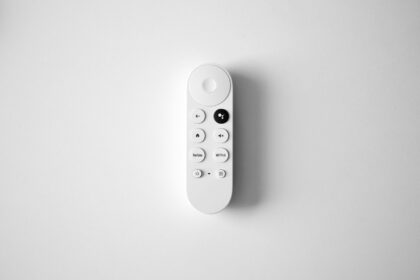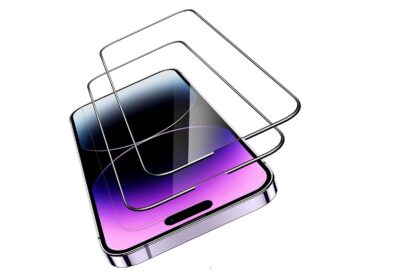Short answer: if your own voice returns while on a call, three causes usually explain the loop. Many gaming sets include sidetone or mic monitoring by design. A Windows option called “Listen to this device” can route input straight to output. Classic echo or feedback happens when a microphone re-captures sound from nearby speakers.
These situations feel similar but matter for fixes. A built-in sidetone is a helpful feature that gives near-zero latency voice monitoring. Unwanted echo harms the audio experience and hurts call or recording quality. Outdated drivers, audio enhancements, or wrong settings on the computer or app often trigger odd returns of sound.
Quick relief often works: uncheck the listening option on Windows, lower input level on Mac, or toggle the sidetone switch on devices like HyperX USB dongles. Also try different USB ports, reduce room noise, and move speakers away from the mic to stop feedback and restore clear audio.
Quick start: Stop the echo and feedback right now
Small adjustments often stop echo and restore normal sound fast. First, lower the mic input volume and verify the inline mute or volume wheel is not partially toggled. Reseat plugs and move a USB device to another port; direct connections reduce conflicts.
Fast checks: Volume, mute switch, ports, and default device
On Windows, right‑click the speaker icon, open Sound, and set your headset as the default device for both Playback and Recording. This avoids routing loops that cause feedback.
Open your mic’s Device properties, go to the Listen tab, and uncheck Listen to this device if it’s active. Mac users should lower Input volume under System Settings > Sound > Input and check app preferences for monitoring.
Spot the symptom: Echo, sidetone, or “Listen to this device” loop
Raise input sensitivity in apps such as Discord to stop hot‑mic behavior. For HyperX USB models, press and hold the dongle side button to toggle sidetone. On PS4, adjust Microphone Level under Settings > Devices > Audio Devices until the echo fades.
| Symptom | Likely cause | Quick fix | Where to check |
|---|---|---|---|
| Instant, zero‑lag repeat | Sidetone/mic monitoring | Toggle sidetone or dongle button | Headset hardware / USB dongle |
| Delayed, hollow echo | Speaker bleed into mic | Lower speaker volume; move mic or speakers | Room setup / physical placement |
| Direct loop to ears | “Listen to this device” or app monitoring | Uncheck Listen to this device; disable app monitor | Windows Sound > Device properties; app audio settings |
Why Can I Hear Myself In My Headset: Common Causes & Quick Fixes
Most returns of your voice come from either a built‑in monitoring feature or a routing mistake. That helps narrow fixes fast.
Sidetone and mic monitoring
Many gaming headsets include sidetone so users hear their own voice with no delay. This feature improves speech accuracy but may feel distracting.
Check your model for a toggle. For example, HyperX USB dongles let you hold the side button to disable monitoring.
System misconfigurations
A Windows loop often happens when “Listen to this device” is enabled under the mic’s Listen tab. Uncheck that to stop direct routing to headphones.
Also reduce Microphone Boost and disable extra recording paths (webcam or laptop mic) to avoid doubled or echoey sound.
App and environment conflicts
Apps like Discord, Skype, and Zoom can manage input sensitivity and monitoring. Verify each app’s audio settings so the correct input and output devices are selected.
Finally, noisy rooms, loud speakers, or a faulty mic can cause feedback. Move speakers away, close doors, or update drivers and try a different USB port for a quick fix.
- Quick tip: Set your headset as the default device to prevent mixed playback and recording across devices.
Fix it on your computer: Windows and Mac step-by-step
A few quick tweaks on your computer often stop routing loops and restore clear sound. Start with the system sound panel and app audio settings before changing hardware.
Windows: disable monitoring and clean routing
Right‑click the taskbar speaker icon and open Sound settings. Choose your microphone, open Device properties, then the Listen tab and uncheck “Listen to this device.”
Next, open Control Panel > Sound > Playback, right‑click your default device > Properties > Enhancements and select Disable all enhancements if feedback persists.
Windows: update drivers and check apps
Use Windows + X > Device Manager > Sound, video and game controllers. Right‑click the audio device and choose Update driver > Search automatically. Reboot after updates.
In Discord or Skype, confirm the headset is selected for input and output. Raise Input Sensitivity or disable any mic monitoring to stop duplicate monitoring during a call.
Mac: input volume and app preferences
Open Apple menu > System Settings > Sound > Input and reduce the Input volume. Check Zoom or Skype audio preferences so apps don’t override system choices.
Install any macOS updates via About This Mac > Software Update to keep audio drivers stable.
Ports and devices: USB vs 3.5mm and reconnection tips
Move a USB headset to another port and avoid unreliable hubs or adapters during troubleshooting. Reseat 3.5 mm plugs fully and try a spare cable if available.
If the model has sidetone control, toggle it off (for example, hold the side button on some USB dongles). Disable unused recording devices so only the intended mic is active.
For more guidance on persistent echo, see this quick guide to fix echo.
Headsets, gaming, and consoles: device-specific solutions
Console and gaming setups often need device-specific tweaks to stop voice loops fast. Start with hardware controls before changing software. Small adjustments usually restore clean audio and call quality.
HyperX and similar models include a sidetone toggle on the USB dongle. Press and hold the side button to switch monitoring off, then speak to confirm the return is gone. Note: that sidetone state can persist across systems, so toggle it if the problem follows you to another computer.
PS4 and console tips
On PS4 open Settings > Devices > Audio Devices and move the Microphone Level slider while you talk. Find the level that removes echo without making your voice too quiet during party chat.
- If using a 3.5 mm splitter, ensure plugs are fully seated and matched to the correct jacks. Miswired plugs cause odd routing or no mic pickup.
- Check boom placement: rotate the boom slightly off-axis and keep it 1–2 inches from your mouth to cut breath noise but keep clear voice pickup.
- For gaming headsets with companion apps, lower any mic monitoring or sidetone settings to reduce distraction while preserving useful feedback.
For step-by-step troubleshooting and extra tips, see this hear headset troubleshooting.
Conclusion
Wrap up: follow a few fast checks to stop hearing unwanted loops and restore clear audio.
Turn off Windows “Listen to this device,” lower Mac input, or hold a HyperX USB dongle to toggle sidetone. On PS4, adjust Microphone Level until echo stops.
Use direct USB ports, set your headset as the default device, and disable extra mics such as webcams. Update or reinstall audio drivers on the computer if the problem persists.
If you still detect feedback, test another headset and treat room noise or speaker placement as likely causes. These steps should return high quality sound for calls, recording, and gaming.
FAQ
Why am I hearing my voice through the headset during calls or games?
Hearing your voice usually comes from mic monitoring (sidetone), a system setting called “Listen to this device,” or app-level monitoring in Discord, Zoom, or Skype. Check headset controls first, then Windows or macOS audio settings and the app’s input/monitoring options. If using a USB dongle or mixer, those can also route mic audio back to the headphones.
How do I stop echo and feedback immediately?
Quick fixes: lower headset and speaker volume, mute the mic, unplug and reconnect the headset, and check for a mute or sidetone toggle on the headset or dongle. Then open the sound settings on the computer and confirm the correct playback and recording devices are selected as default.
What should I check first — hardware or software?
Start with fast hardware checks: ensure the headset is firmly connected (USB or 3.5mm), try a different port, and test another headset if available. Next, check software: default device selection, mic monitoring settings, and any driver or app configurations that enable monitoring or boost the mic.
What is sidetone and why does it cause my voice to play in the headset?
Sidetone is intentional monitoring that plays a bit of your own voice back to help you judge volume and speech. Gaming headsets often include sidetone toggles. If it’s too loud or unexpected, turn the sidetone control down or disable it in the headset software or on a physical dongle/button.
How do I disable “Listen to this device” on Windows?
Open Sound settings > Sound Control Panel > Recording tab > double-click your mic > Listen tab and uncheck “Listen to this device.” That stops Windows from routing microphone input back to playback devices.
Why does Discord or Zoom let others hear an echo even when I don’t hear it?
App-level echo can come from input monitoring, wrong input device, or multiple devices active (built-in mic and headset mic). In Discord, disable “Input Monitoring” or lower input sensitivity. In Zoom, turn off original sound and check microphone settings to ensure only the headset mic is active.
Could audio drivers be responsible for my feedback problem?
Yes. Outdated or corrupted drivers can misroute audio and enable unwanted features like mic boost or enhancements. Update drivers from the PC maker or Realtek/Intel/ASIO vendor, and disable audio enhancements in Playback device properties if issues persist.
What about Mac — how do I stop hearing myself there?
On macOS, go to System Settings > Sound and set the correct input and output. Lower the input volume to reduce monitoring and check each app’s audio settings for any monitoring options. Updating macOS can also resolve driver or routing bugs.
Is speaker bleed or a noisy room causing others to hear an echo?
Yes. If headset speakers leak sound, the mic can pick it up and send it back, creating an echo. Use closed-back earcups, reduce speaker volume, move to a quieter room, or switch to a mic with a tighter pickup pattern (cardioid or dynamic) to reduce bleed.
How do USB headsets differ from 3.5mm for this issue?
USB headsets use built-in sound processing and can include sidetone controls or software. 3.5mm headsets rely on the PC’s sound card and Windows/macOS settings. If using hubs or adapters, try plugging directly into the computer to rule out faulty adapters or powered hubs.
Are there headset-brand specific tips, like for HyperX?
Many brands have built-in sidetone controls. For some HyperX models, hold the sidetone button on the USB dongle to toggle monitoring. Check the headset manual or companion app for brand-specific toggles and firmware updates.
What if muting and unplugging don’t fix the problem?
If basic steps fail, update audio drivers, disable all audio enhancements, set the correct default devices, and test with another headset or computer. If the issue remains, the headset or microphone hardware may be faulty and need repair or replacement.
























